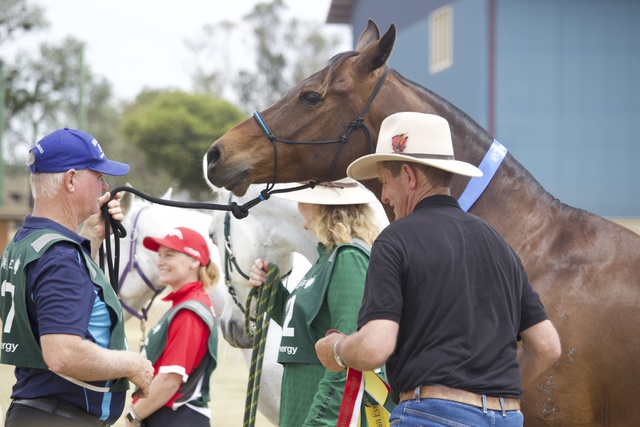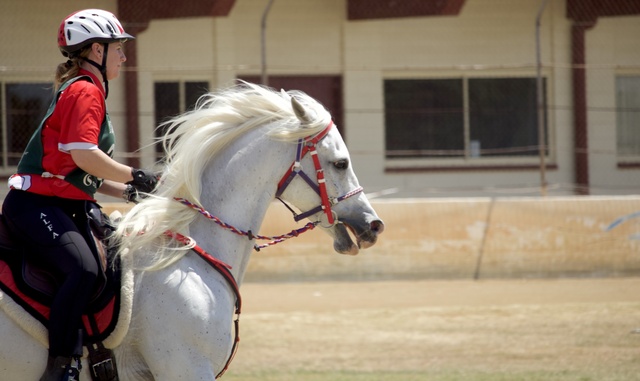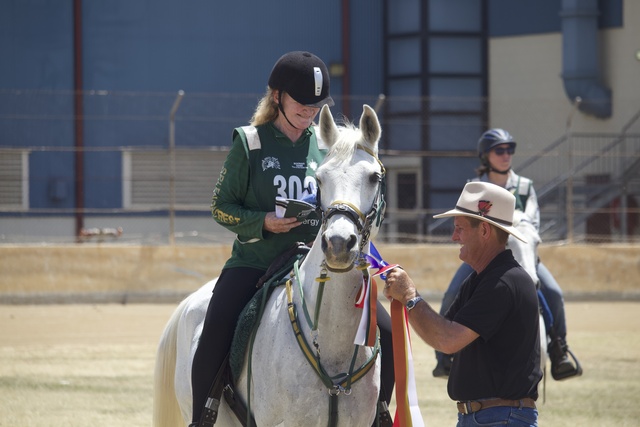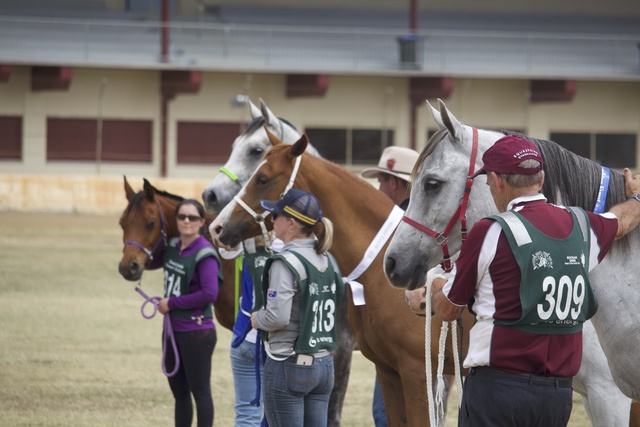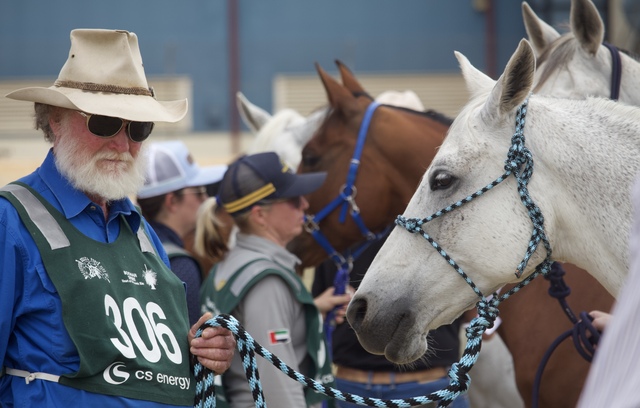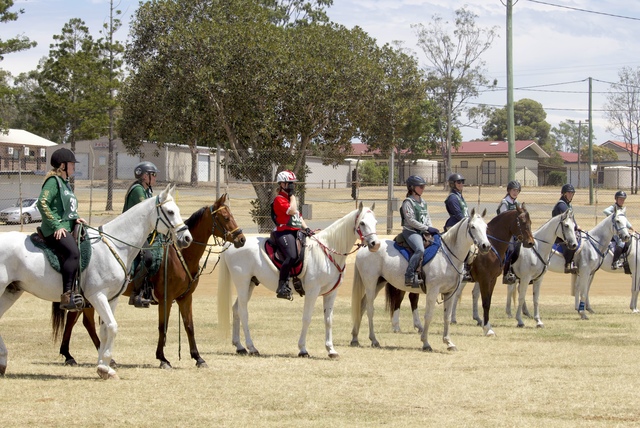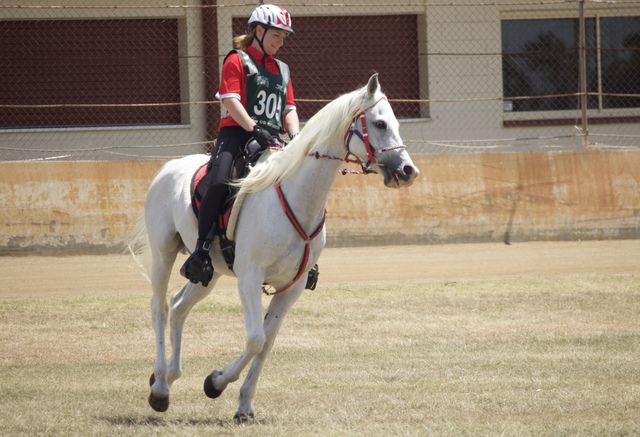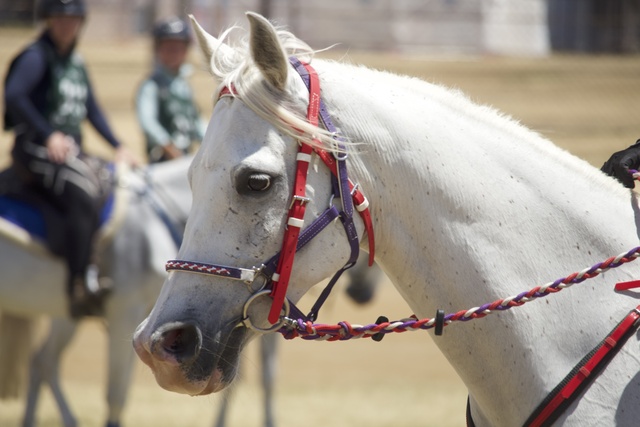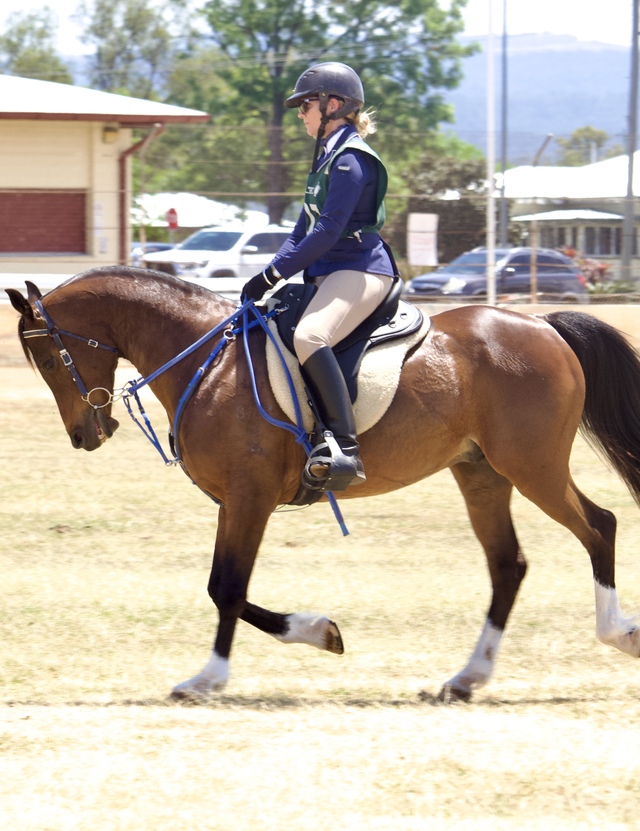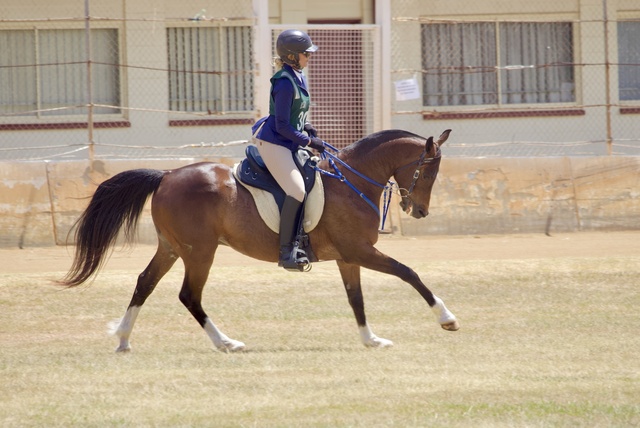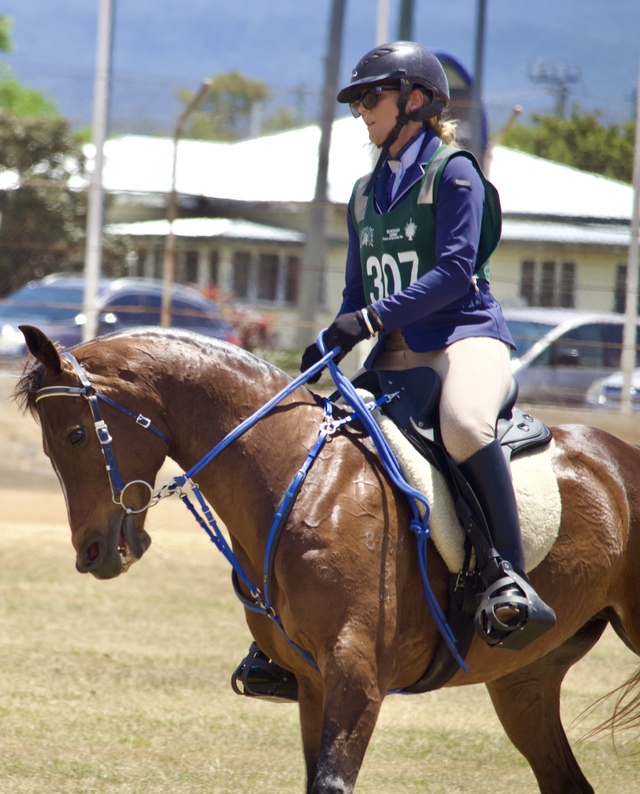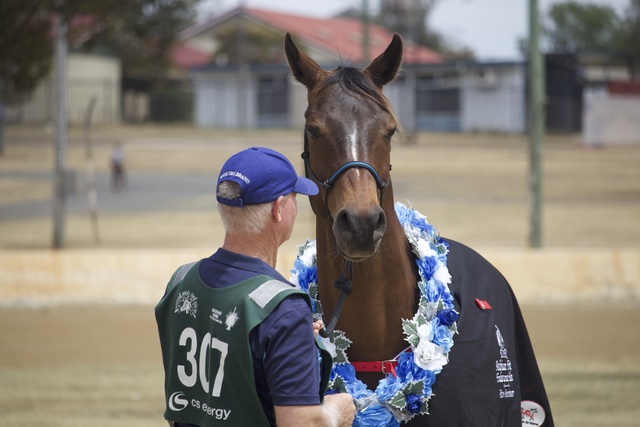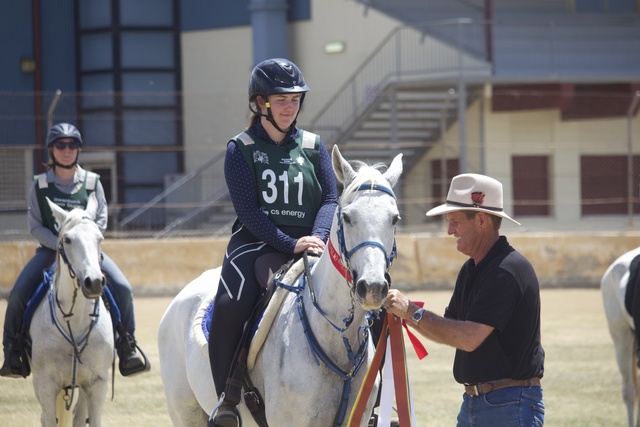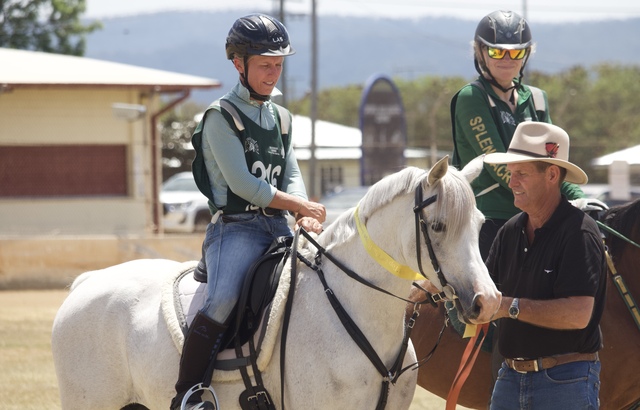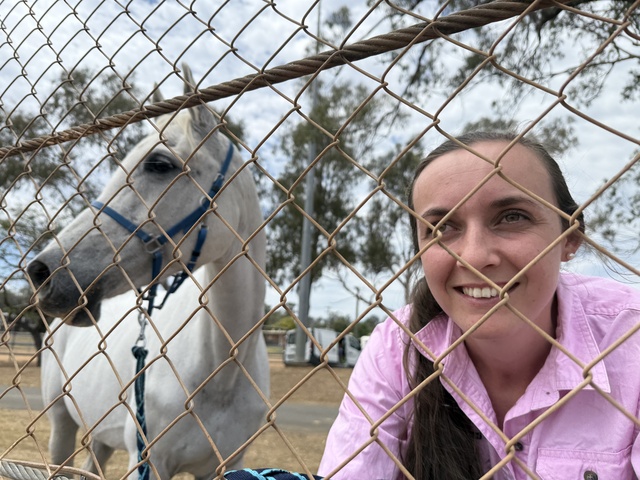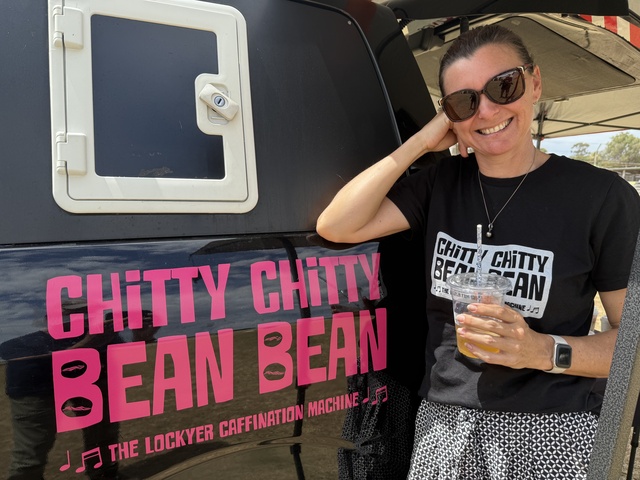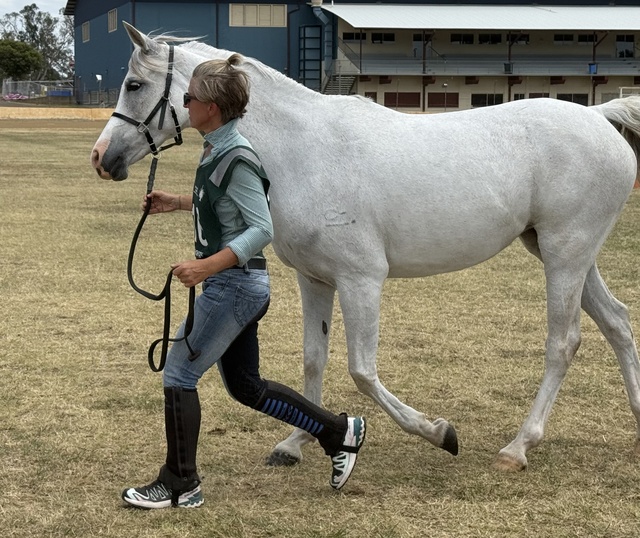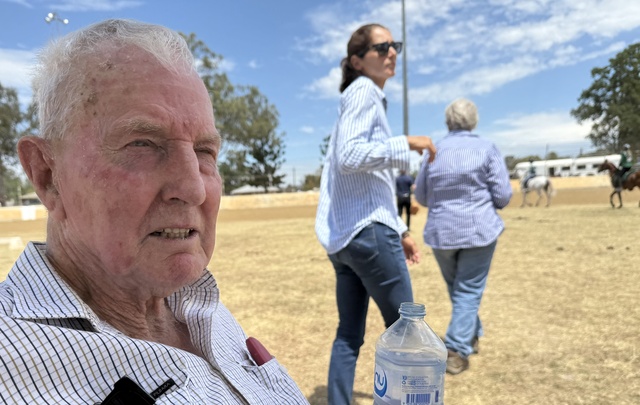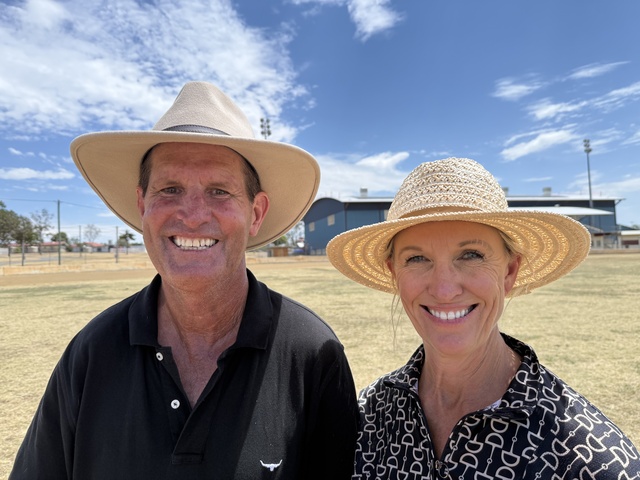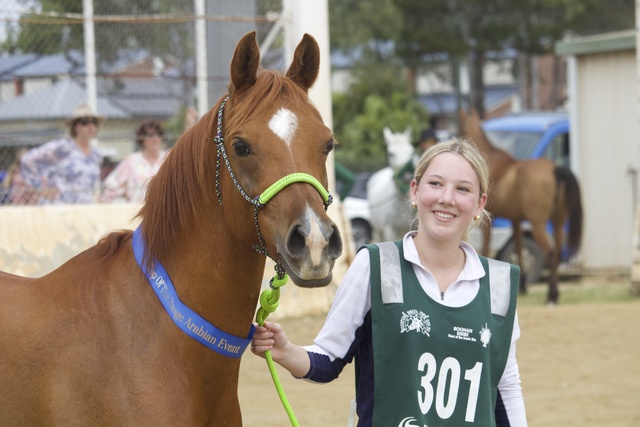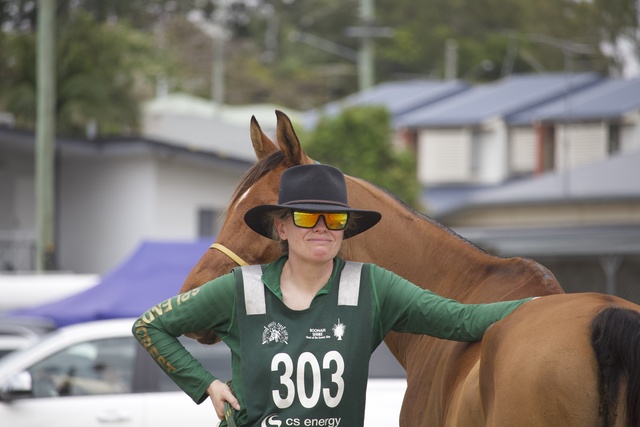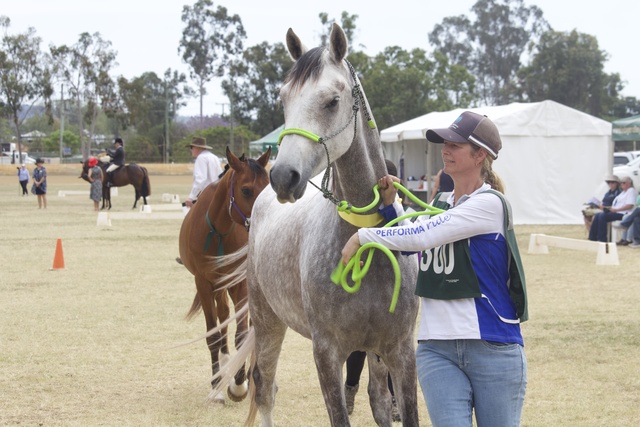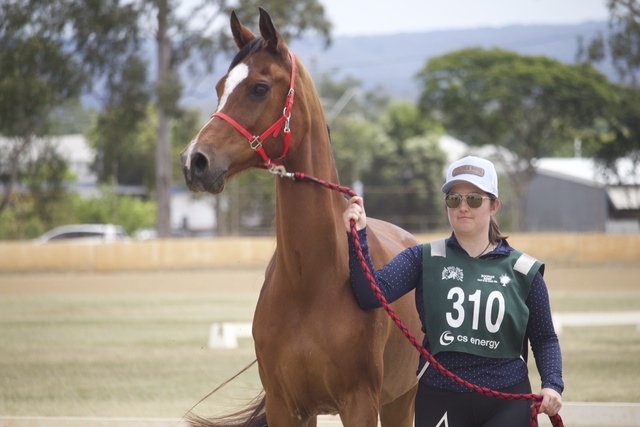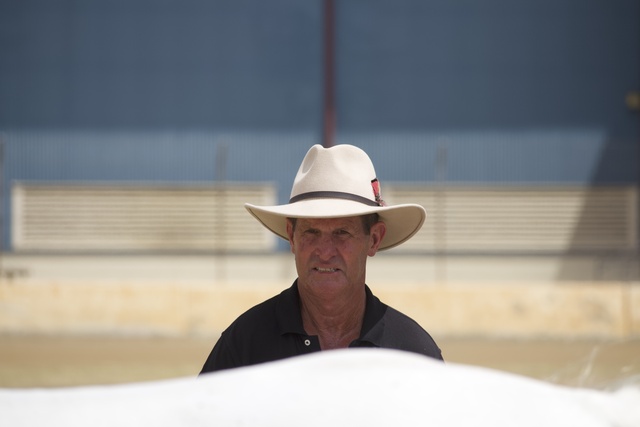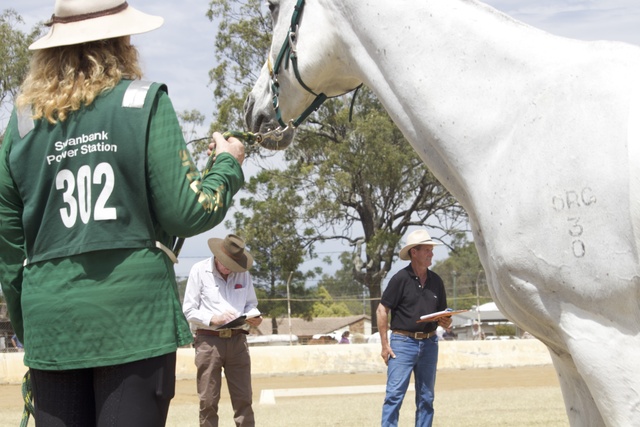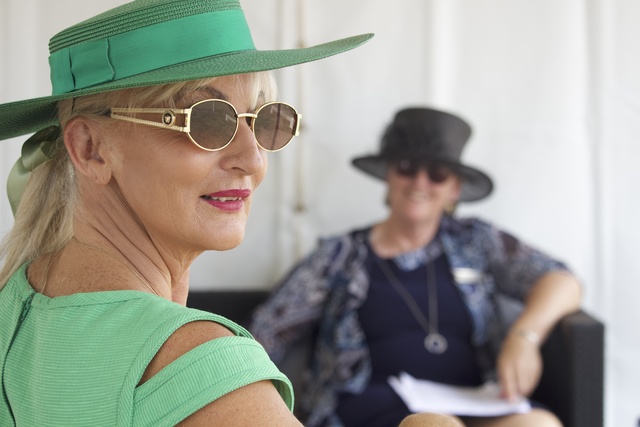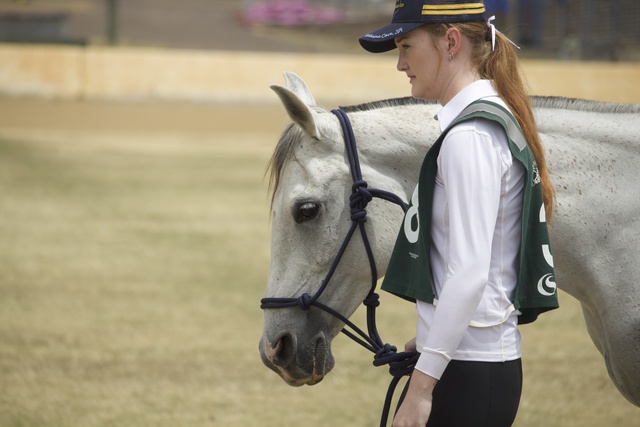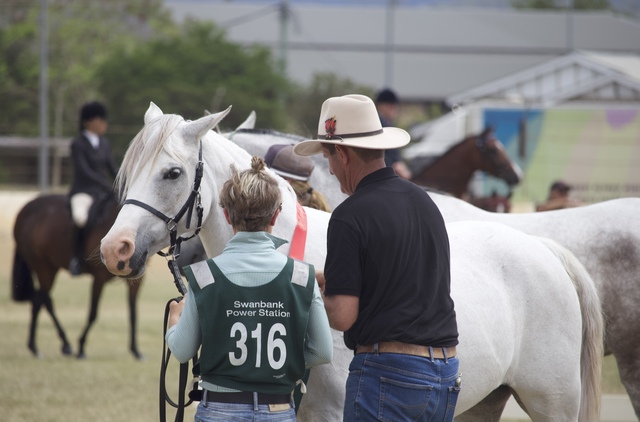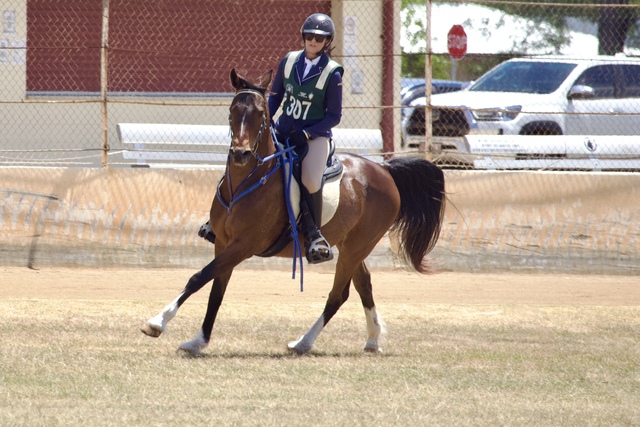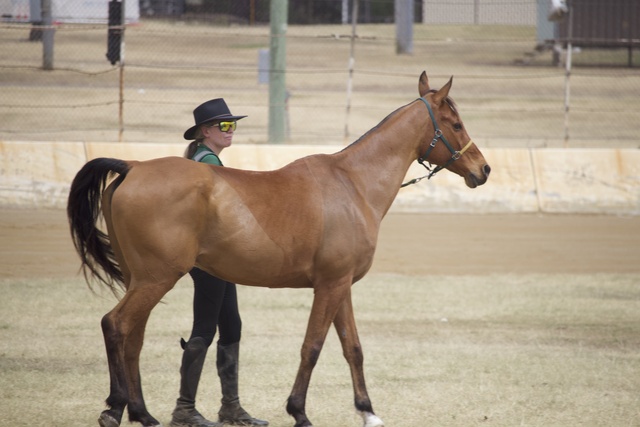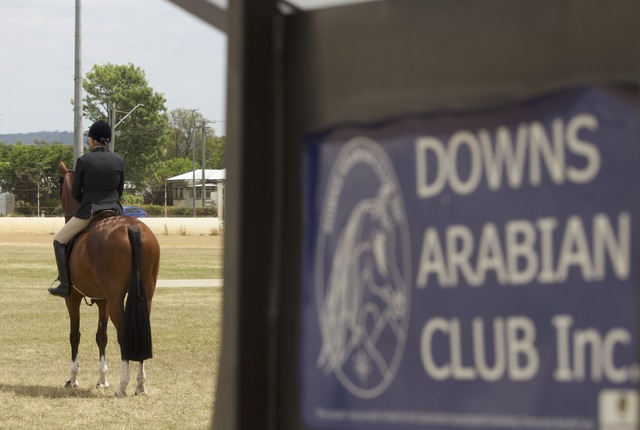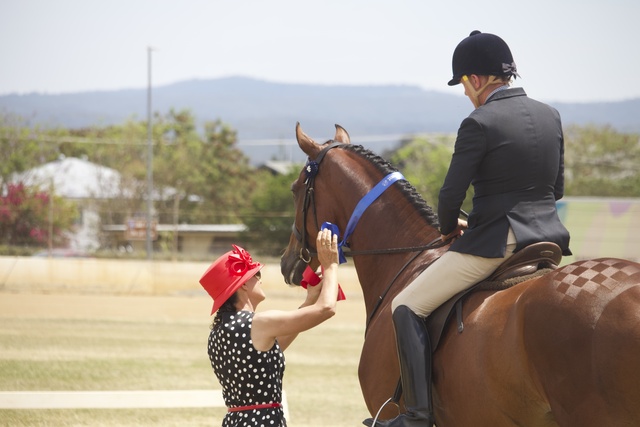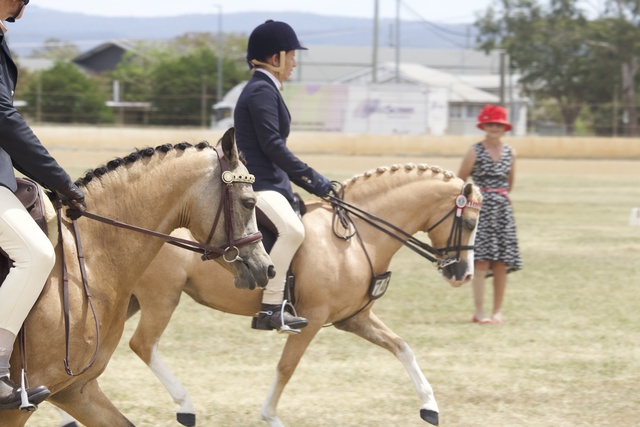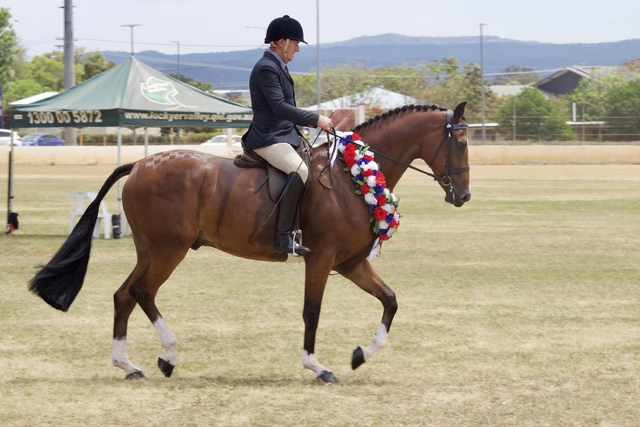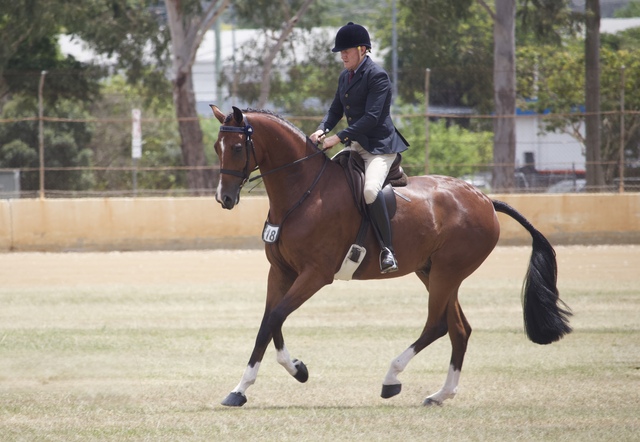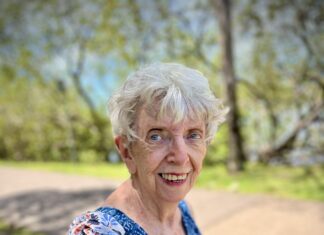The Arabian breed has been an integral part of the story horses play in Australia. ERLE LEVEY takes a look at how its traits of stamina, speed and strength have played such a significant role in the development of our nation and equine culture.
“The thing I enjoy most is the teaching. With horses there is no answering back … unless you ask for it.”
Horses are relatively late arrivals on the Australian landscape when you look at the bigger scheme of things.
However, they have become embedded in the nation’s storybook, whether opening up the country or their association with equestrian pursuits.
The Arabian horse breed has been an overriding dynamic in the development of horses in Australia – early on it was one of the horses owned by the venerable Duke of Wellington, and now they are an influential part of breeding.
The Australian Stockhorse, for example, has played a critical role in the development of a distinctly Australian breed.
The stock horse has been on the battlefields of Europe and in the Middle East. They have been part and parcel of the drovers and graziers on the golden plains extended.
Today the Arabian breed is highly regarded in show rings and on endurance trails as well as on cattle stations and sheep properties throughout this great brown land.
One of the great ironies of the equine world is that the prettiest of horses – the Arabian – is also the toughest.
Between the soft, appealing eyes and the streaming high-set tail is an equine body which has been bred for thousands of years to cope with the most unforgiving of environments and the demands of being a horse of war.
Queensland Endurance Riders Association (QERA) president Dick Collyer was speaking after the Top of the Range Arabian event for 2025 at the Gatton Showgrounds.
More than 80 horses were entered in Arabian endurance and Arabian derivatives – a cross between a pure Arabian and another breed.
Hosted by the Downs Arabian Club Inc (DACI), the event is regarded as one of the major Arabian shows in Queensland and members are justifiably proud of its reputation.
Founded in 1979 by enthusiasts from the Darling Downs and South East Queensland, the aim was to promote and enjoy Arabian horses through educational, promotional, and social activities.
The Downs Arabian Club was co-founded by Marion Sharman, a prominent breeder and supporter of the breed.
Downs Arabian president Richard Sharman is carrying on the legacy of his mother.
Richard said the committee had worked hard to provide a balanced program of events with one of the major goals being to provide both the saddle and halter classes with equal importance.
The longevity of the club is testament to the friendships that have evolved and endured over the time through a common interest of Arabian horses.
The judges comprised Annette Vickery, a highly-respected international Arabian judge with more than 40 years of experience in the equestrian world.
Viv Motbey was drawn to Arabians and coloured Derivatives at a young age and has gone on to have a succession of some of the most successful horses in recent times.
Ken Gordon has been riding since childhood and with his wife Coralie has bred more than 200 purebred and Anglo Arabians in the past 50 years.
Together they started on their endurance lives with Ken riding 2598km over 20 years, achieving a Quilty Buckle for completing the iconic 160km Tom Quilty ride in 2015 – at the age of 73 at his first attempt.
It was a fabulous turn-out of endurance horses, Richard said, and the judges were impressed by the overall standard of entries as well as representation of the breed.
For Dick Collyer, the great beauty of the Arabian horse in the modern world has made it a popular and spectacular show horse.
“It is in the even more popular equestrian discipline of endurance riding that the Arabian horse really comes to the fore.
“It was heartening to see Arabian Endurance horses so well-represented at Gatton.
“An even bigger Arabian Endurance horse show will be held at Stirling’s Crossing at Imbil in the Mary Valley in July 2026, when the Tom Quilty Gold Cup Endurance Ride returns to Queensland.’’
Arabian horses are spirited, energetic and responsive.
They are adaptable and show great competitiveness in endurance riding events.
They can form deep bonds with their owners and are known for their loyalty and sensitivity to their riders.
Often curious and having a lot of personality, they are quick learners, making them easy to train.
TEMPERAMENT PLAYS BIG PART
For Toowoomba horse breeder Jay Randle, who started Splendacrest Stables 25 years ago, taking out Ridden Endurance Horse Purebred/Arabian Derivative first place at Gatton with De-Sharvarll El Dakar was as personally rewarding as it was recognition of the 15-year-old gelding’s breeding, performance under saddle and temperament.
Jay also took second place in the Halter Horse – Purebred Gelding class.
“My first priority with any horse is temperament,’’ Jay said. “Falcon is his stable name and he has a lovely calm nature.
“Falcon is truly remarkable, having won Polish Horse of the Year three years in a row now, along with being one of the horses that qualified for the World Youth Champs this year.
“I bought him as a weedy two-year-old, and am very proud of him. He does everything … including teaching little kids to ride.
“I don’t ride much anymore, so it was a big ask to do a show workout.
“It’s been 50 years since I did one, so it was a great feeling to actually win.’’
Falcon has completed 33 endurance rides and 3607km plus 31 other rides.
He has been consistently in the winners circle and among the placegetters with young riders such as Indi Else, Charlotte Williamson, Maggie McNamara and Neve Whittaker.
The winner of the 2023 Australian Endurance Riders Association (AERA) 160.0km Endurance with Federation Endurance International (FEI) at Stirling’s Crossing, Imbil in 2023 with Indi Else, Falcon completed the 2023 Tom Quilty 160km ride with Daryl Owen – also at Stirling’s Crossing.
With junior rider Charlotte Williamson he finished third in the 2023 Far-A-Way 320km marathon at Imbil in 40 hours 31.45.
At the start of October he completed the FEI 120km at the 2025 Matar & Bullio New South Wales State Championships with New Zealand rider, Brydie Black.
Brydie had never ridden him until the day before the event but achieved eighth place in the two-star open.
HISTORY OF THE ARABIAN HORSE
Arabian horses, among the world’s oldest and most influential breeds, originated in the Arabian Peninsula and were developed by nomadic Bedouin tribes more than 3500 years ago.
Prized for their speed, endurance, and intelligence, Arabian horses have been used to improve other breeds by adding refinement and strong bone.
Today, Arabian bloodlines are found in almost every modern breed of riding horse.
According to the Arabian Horse Society of Australia, through breeding they have developed an ability to form a cooperative relationship with humans – one that is good-natured, quick to learn, and willing to please.
Compared with the antiquity of the breed, the short history of the Arabian horse in Australia seems but “a step in the journey of a lifetime”.
Just a little over 2OO years separates the modern Australian Arabian from the arrival of his ancestors in this country, which had no indigenous equine population.
The First Fleet of 1788 brought with it a small group of horses collected on the sea journey from Cape Town, and given the diverse origins of the horses of the Cape, probably the new arrivals carried some Arab and Barb blood in their veins.
Over the next period of history until the mid-18OO’s, many horses of oriental extraction – some of Persian and Arabian blood from India – contributed to the foundation stock of the new colony.
One of the most influential stallions, Hector was imported in 1806 from Calcutta. He originally belonged to Colonel Arthur Wellesley, the first Duke of Wellington.
The foundation stock of the Australian Waler was Arabian, just as the Australian Stockhorse was founded squarely on the shoulders of the Arabian horse.
Another significant development, which cannot be overlooked, was endurance riding, and the seminal event that was the very first Tom Quilty Endurance Ride which was held at Richmond, NSW in 1966.
It was pioneered by well-known Australian bushman and bush outfitter, the owner of Hoof and Horns magazine, R.M.Williams who was also an Arabian breeder.
This sport has seen huge growth in the 60 years since then, to the point where Australian teams and riders are now very prominent in endurance rides around the world, and hundreds of Australian-bred Arabians have been exported, mostly to the United Arab Emirates.
QUEENSLAND HISTORY
In Queensland Miss Marion Macqueen (Mrs Tom Sharman) started her stud in 1949. It was later named Jangharm after the hill on the property at Cooranga North, near Kingaroy.
Sir Clarence Leggett’s Oxford Stud is linked to the now very large and influential Bremervale Stud, on the Brisbane River.
The Queensland Agricultural College founded its stud in 1957.
For Richard Sharman, it was a matter of growing up with them at Milmerran.
“Mum was born there … her father was watercolor artist Kenneth Macqueen who, with his brother, was allotted a property after war.
“Growing up, there were not many options to Arabian horses but there have been a lot of changes.
“Australian stock horses became a thing and you also have thoroughbreds, with the showing of horses and show jumping.
“Arabians were a horse for all seasons. Mum got her first one at the age of 16 and maintained the stud until 2018, mostly while located at Bell in the South Burnett.’’
When Richard left school, he went to the USA, learning how to show Arabians.
Since then has been showing them but his time consists mainly of providing farrier work, breaking in, float lessons, foal handling and halter training.
When showing horses in the 1990s there could be up to 2000 at shows such as Melbourne’s Victorian Classic and Sydney’s National Horse and Pony Show.
Maureen and Tom Sharman were both inducted into hall of fame for Arabians and made life members of the Australian Arabian Alliance Breeders Australia and New Zealand.
Both were judges all over Australia, and while Maureen passed away earlier this year Tom, now aged 91, is now on the Gold Coast.
“Dad was a good supporter,’’ Richard said. “He would drive us everywhere and show some horses as well, he was on the (AHSA) board for years.’’
Today Richard works with thoroughbreds, educating foals and weanlings, as well as his stewardship shows.
It was a love horses and working with them that got him into the role.
“I had the opportunity to, and it was at a good time when I decided to follow that.’’
In the US he worked in Arizona, at Scottsdale mainly – which is a hub for Arabians and a haven for those escaping the snow in winter.
He then moved up to Canada – at Lethbridge in Alberta – and learned more about general handling and presenting for showing.
When he came home in 1983 Queensland was under drought and there was one bale of hay in the shed at Bell.
“The thing I enjoy most is the teaching,’’ Richard said. “With horses there is no answering back … unless you ask for it.
“If you confuse them that can bring issues. Their natural attitude is to do the right thing.
“The secret of training is make what you want comfortable … and uncomfortable if not.
“With children it is different. Even if you say ’no’ they try and get around you. Whereas with horses it is only if you let them.
“Provide consistency, as they will pick up the wrong thing as quick as the right thing.
“If you reward something that is not quite right, it opens up confusion and it takes time to sort them out.’’
Introducing yourself to a horse is a matter of the tone of voice and has a calming influence on them.
“They will pick up on how you sound,’’ Richard said. “A horse doesn’t understand a word – only tone and movements – and they relax in that way.’’
ENDURANCE RESULTS
Class END1 Junior Handler – Open to QERA Junior Members
Cedar Glen Nala, owned by Sabrina Stephens, shown by Lilly Stephens.
Class END2 Novice Endurance Halter Horse – Purebred/Arabian Derivative
1. Cronicle TA, Toft Arabians, shown by David Toft. 2. Georgia Park Zovrana, Claire McManus. 3. Riverdance Lavinia, Dick Collyer, shown by Alana Simpson
Class END4 Endurance Halter Horse – Purebred Gelding
1. Shardell Elderado, Rod Strahan. 2. De-Sharvarll El Dakar, Jay Randle. 3. Melcot Santini, Mindy Gadsby.
Class END5 Endurance Halter Horse – Purebred Mare
Emilina, Richard Collyer. 2. Matilda Silque, Mia Oliver. 3. Malala, Dick Collyer, shown by Alana Simpson.
Champion and Reserve Champion Endurance Halter Horse
Class END7 Junior Rider – Open to QERA Junior Members
Cedar Glen Nala, owned by Sabrina Stephens, shown by Lilly Stephens
Class END8 Ridden Endurance Horse Purebred/Arabian Derivative
1. De-Sharvarll El Dakar, Jay Randle. 2. Lindall Sarina, Tamara Gibson. 3. Melcot Santini, Mindy Gadsby.
Champion: Shardell Elderado
Reserve Champion: Emilina

